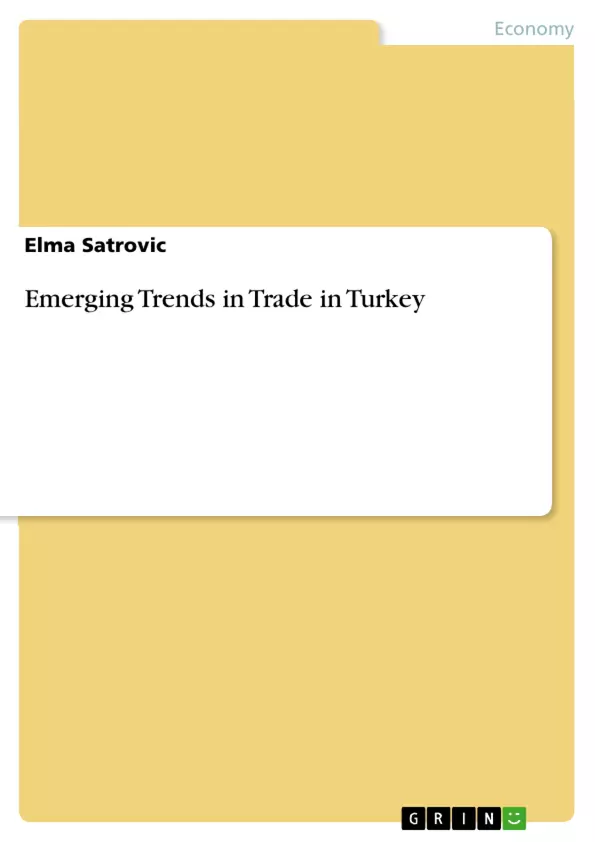This book consists of the four essays treating the macroeconomic role of the trade openness. In the first essay, we have explored the trade openness-human development nexus by employing VECM in the period 1990-2017. The second chapter employs ARDL to display the evidence on the trade openness-education nexus. However, the second chapter was looking for the answer whether or not the better education can contribute to the trade openness. In the third chapter we have explored the link between trade openness and economic growth while employing the VECM model, and lastly we have explored the link between one of the fastest growing industries in the World (tourism industry) and trade openness. The research aims to give an important insight for the key policy makers in Turkey. It is suggested that in order to increase the trade openness, the policy makers need to make a necessary effort to promote the education and tourism that will lead economic growth and better statistics in terms of HDI.
Inhaltsverzeichnis (Table of Contents)
- INTRODUCTION
- THE LINK BETWEEN TRADE OPENNESS AND HUMAN DEVELOPMENT IN TURKEY
- TRADE OPENNESS AND EDUCATION: EVIDENCE FROM TURKEY
- APPLYING VECM TO ESTIMATE THE TRADE OPENNESS - GROWTH NEXUS IN TURKEY
- DOES TRADE OPENNESS INFLUENCE TOURISM INDUSTRY IN TURKEY: AN ARDL APPROACH
- CONCLUSION
Zielsetzung und Themenschwerpunkte (Objectives and Key Themes)
This book explores the macroeconomic role of trade openness in Turkey, focusing specifically on its relationship with human development, education, economic growth, and the tourism industry. The research aims to bridge a gap in existing literature by employing the most recent data and utilizing both ARDL and VECM models to establish causality between trade openness and these key factors.
- The relationship between trade openness and human development in Turkey
- The impact of trade openness on education levels in Turkey
- The nexus between trade openness and economic growth in Turkey
- The influence of trade openness on the tourism industry in Turkey
- The implications of these findings for policymakers in Turkey
Zusammenfassung der Kapitel (Chapter Summaries)
- Introduction: This chapter provides an overview of the existing research on the relationship between trade liberalization and economic growth. It highlights the limitations of traditional regression analysis and emphasizes the need for more sophisticated methods like VECM to establish causality.
- The Link Between Trade Openness and Human Development in Turkey: This chapter examines the relationship between trade openness and human development in Turkey using VECM analysis over the period 1990-2017. It investigates whether trade openness contributes to improved human development indicators.
- Trade Openness and Education: Evidence from Turkey: This chapter explores the impact of trade openness on education levels in Turkey using the ARDL model. It investigates whether higher levels of education contribute to increased trade openness.
- Applying VECM to Estimate the Trade Openness - Growth Nexus in Turkey: This chapter analyzes the relationship between trade openness and economic growth in Turkey using the VECM model. It explores the causal link between these two variables.
- Does Trade Openness Influence Tourism Industry in Turkey: An ARDL Approach: This chapter investigates the influence of trade openness on the tourism industry in Turkey, employing the ARDL model. It analyzes the relationship between trade openness and the growth of the tourism sector.
Schlüsselwörter (Keywords)
Trade openness, human development, education, economic growth, tourism industry, Turkey, ARDL model, VECM model, causality, policy implications.
- Quote paper
- Elma Satrovic (Author), 2019, Emerging Trends in Trade in Turkey, Munich, GRIN Verlag, https://www.grin.com/document/454102



